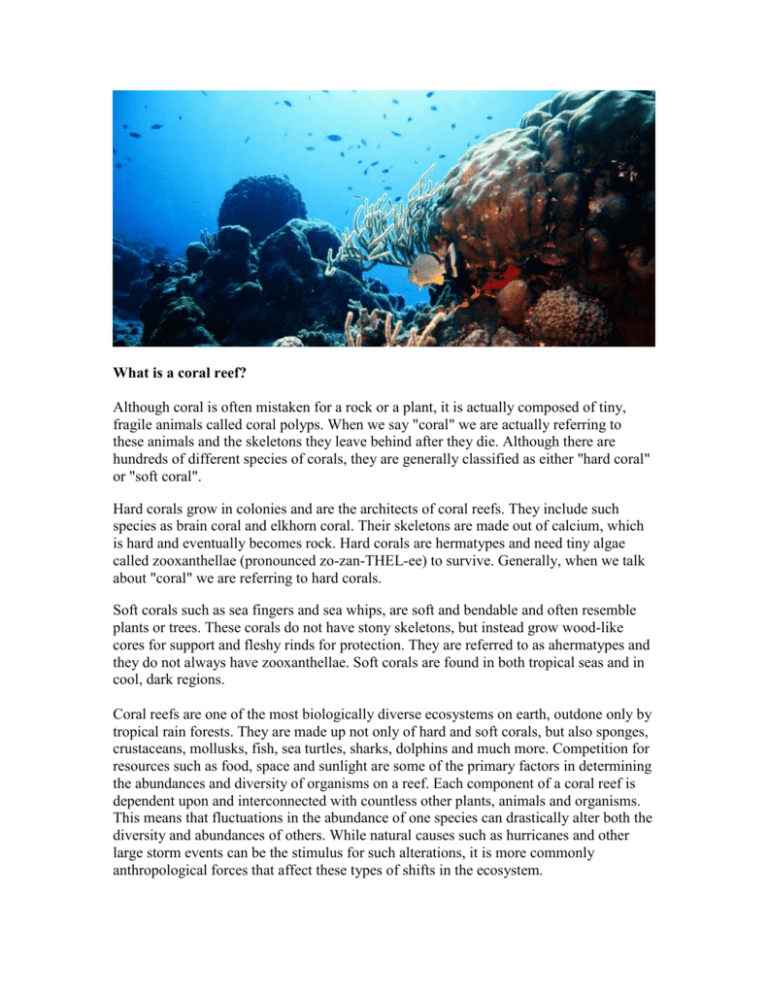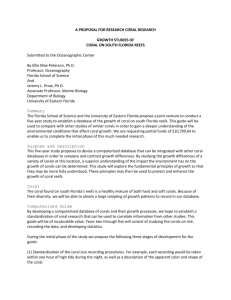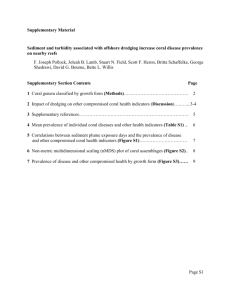Case Study: Coral Reef Bleaching
advertisement

What is a coral reef? Although coral is often mistaken for a rock or a plant, it is actually composed of tiny, fragile animals called coral polyps. When we say "coral" we are actually referring to these animals and the skeletons they leave behind after they die. Although there are hundreds of different species of corals, they are generally classified as either "hard coral" or "soft coral". Hard corals grow in colonies and are the architects of coral reefs. They include such species as brain coral and elkhorn coral. Their skeletons are made out of calcium, which is hard and eventually becomes rock. Hard corals are hermatypes and need tiny algae called zooxanthellae (pronounced zo-zan-THEL-ee) to survive. Generally, when we talk about "coral" we are referring to hard corals. Soft corals such as sea fingers and sea whips, are soft and bendable and often resemble plants or trees. These corals do not have stony skeletons, but instead grow wood-like cores for support and fleshy rinds for protection. They are referred to as ahermatypes and they do not always have zooxanthellae. Soft corals are found in both tropical seas and in cool, dark regions. Coral reefs are one of the most biologically diverse ecosystems on earth, outdone only by tropical rain forests. They are made up not only of hard and soft corals, but also sponges, crustaceans, mollusks, fish, sea turtles, sharks, dolphins and much more. Competition for resources such as food, space and sunlight are some of the primary factors in determining the abundances and diversity of organisms on a reef. Each component of a coral reef is dependent upon and interconnected with countless other plants, animals and organisms. This means that fluctuations in the abundance of one species can drastically alter both the diversity and abundances of others. While natural causes such as hurricanes and other large storm events can be the stimulus for such alterations, it is more commonly anthropological forces that affect these types of shifts in the ecosystem. What things do coral need to survive? Coral reefs need three things to survive. They need warm water, sunlight, and clear, shallow waters. Coral will not grow in waters that are lower than 68 degrees Fahrenheit (20 degrees Celsius). Sunlight and clear, shallow water is needed so that the zooxanthellae in their tissue can photosynthesize. The zooxanthellae transfer some food energy directly to the coral’s polyps. If waters are too deep or too murky, the zooxanthellae will not get enough light to photosynthesize. Photosynthesis is a process that plants go through to make their own sugars and starches. Even though coral is not a plant, it still photosynthesizes to store the energy that it gets from the sugar and starch. This is why you usually don’t find coral below 100 meters (330 feet) deep. Questions. 1. What types of coral are there? 2. What are corals made of? 3. What are the three things corals need in order to grow? 4. About what temperature does the ocean need to be for the coral to live? 5. What is the name of the tiny algae found on hard corals?









